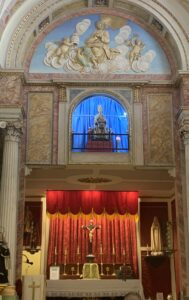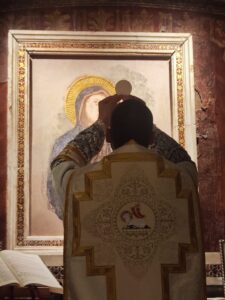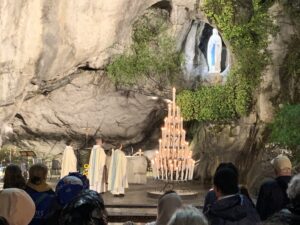During the month of August, I had the privilege of attending Mass in various locations, experiencing the beauty of Catholic liturgy and the celebration of the Eucharist in different forms. As a layman, I wish to share my reflections on the profound impact the Holy Mass has had on my Christian life.
Exploring the Extraordinary Liturgy of the Traditional Roman Rite Mass (Vetus Ordo)
My journey began by attending the traditional Roman Rite Mass (Vetus Ordo) at the Chapel of Our Lady of Mercy and Saint Peter the Apostle in Barcelona. The solemnity of the Latin and Gregorian chants, the mystery, adoration, and beauty of the liturgy resonated deeply within me, as I was captivated by the reverence and devotion displayed during the Mass.

The rich heritage of the Roman Missal, as highlighted by Pope Benedict XVI in 2007, emphasizes the importance of preserving the traditional and extraordinary form of the liturgy, alongside the ordinary form promoted by Pope Paul VI. This recognition of the two forms of the Roman rite indicates a unity in diversity, maintaining the sacred tradition of the Church.
Further exploring the historical significance of the liturgy, it is evident that the liturgical reform following the Second Vatican Council sparked a debate on the continuity versus rupture in the liturgical tradition. Pope Benedict XVI’s call for a hermeneutics of continuity emphasizes the need to balance the transcendent and earthly aspects of the liturgy, ensuring a harmonious worship of God.
As I delved deeper into the significance of the traditional Roman rite, I discovered the profound cultural and spiritual value attached to the Catholic liturgy. The liturgy, whether in its traditional form or the Novus Ordo, plays a crucial role in shaping the faith and piety of believers, inspiring a sense of unity and reverence within the Church.
Embracing the Ordinary Liturgy of the New Roman Rite Mass (Novus Ordo)
Continuing my spiritual journey, I attended Mass at various sacred sites, including the Basilica of Pilar in Zaragoza, the Monastery of Leyre in Navarra, the Cathedral of Pamplona, and the Sanctuary of Lourdes in France. Each experience offered a unique perspective on the Novus Ordo Mass, celebrated with devotion and reverence.
Reflecting on the use of Latin in the Mass, I pondered Father Alberto José González Chaves’s insights on the significance of Latin as a universal language of worship. The traditional use of Latin preserves doctrinal precision and fosters a sense of unity in the liturgy, connecting believers across cultures and generations.

At the Cathedral of Pamplona, I witnessed the beauty of a Novus Ordo Mass celebrated entirely in Latin, reminiscent of the timeless traditions of the Church. The profound silence and reverence displayed by the faithful during the Mass underscored the significance of adoration and humility in worship.
Concluding my pilgrimage at the Shrine of Lourdes, I was inspired by the devotion and faith of the pilgrims, coming together in prayer and adoration. The solemnity of the Mass, combined with the ethereal chants and hymns, created a sacred atmosphere, drawing worshippers into a deeper communion with God.

In conclusion, my journey through the traditional and ordinary forms of the Roman rite Mass has reinforced the importance of reverence, adoration, and unity in Catholic worship. Whether in the Latin splendor of the Vetus Ordo or the contemporary expressions of the Novus Ordo, the liturgy serves as a gateway to the divine, enriching the faith and spiritual life of believers.



